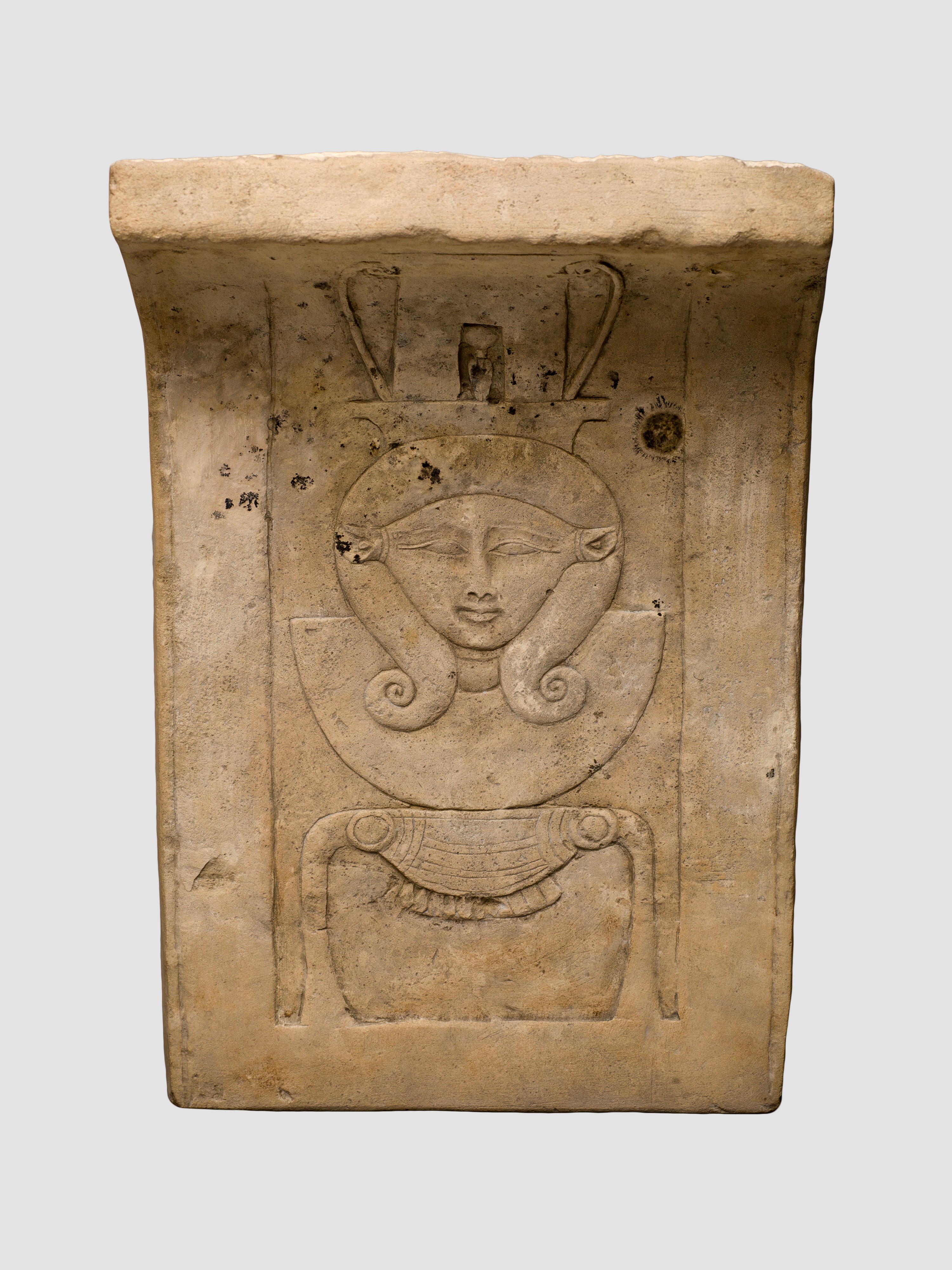Relief plaque of Hathor emblem, curved as if from a temple frieze
Late Period–Ptolemaic Period
Small Late Period and Ptolemaic reliefs or sculptures that depict a subject in a partial or unfinished way but are themselves finished objects constitute a special class of object. Guidelines like those for artists are often prominently exhibited as part of the object, although, in fact, many instances can be noted where the object simply could not serve as a suitable model for a traditional formal Egyptian representation. Personifications of kingship, figures that may represent the now emerging demigods Imhotep and Amenhotep Son of Hapu, and popular gods like Harpokrates or Isis, are heavily represented within the corpus.
Taken together, the figures represented and the other features indicate the reliefs and sculptures of this class, sometimes called by Egyptologists "sculptor’s models / votives," were the material of a donation practice, perhaps connected with the prolific temple building of these centuries. Unfortunately there is little to illuminate us about the mechanics of such a donation practice.
Architectural elements are also reprsented among the small sculptures that can be termed donation scultpures. Figural friezes that take the curvature of a cavetto cornice sometimes occur at the tops of walls or screen walls, as do friezes that are not curved. This relief depicts a section from a curved frieze of Hathor emblems, a decorative frieze element found in many female temples and mammisis of the Late Period. The Hathor emblem appears over the hieroglyph for gold, so that the composite reads "the golden goddess."
This image cannot be enlarged, viewed at full screen, or downloaded.
This artwork is meant to be viewed from right to left. Scroll left to view more.



